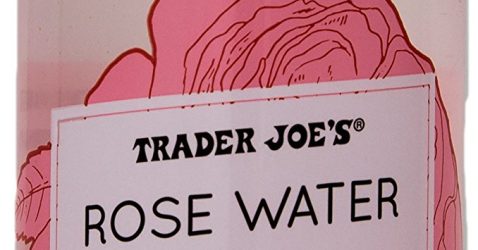The Challenges and Successes of Managing Trader Joe’s Supply Chain
Trader Joe’s, the beloved neighborhood grocery store, has become synonymous with quality products and unique offerings. However, behind their shelves filled with delicious treats and must-have staples lies a complex and intricate supply chain management system. In this article, we will explore the challenges and triumphs faced by Trader Joe’s in managing their supply chain, and how these factors contribute to their success in providing customers with the products they love. From sourcing and distribution to inventory management, join us as we peel back the layers and uncover the secrets behind the smooth operation of Trader Joe’s supply chain.

Challenges in Managing Trader Joe’s Supply Chain
Maintaining High Product Quality Standards
One of the major challenges in managing Trader Joe’s supply chain is maintaining high product quality standards. Trader Joe’s is known for its commitment to offering high-quality and unique products to its customers. This means that the company needs to work closely with its suppliers to ensure that the products meet the strict quality requirements set by the company. From the sourcing of ingredients to the manufacturing and packaging processes, Trader Joe’s has to ensure that every step of the supply chain aligns with its quality standards. This requires constant monitoring and regular audits to ensure that the products meet the desired quality levels.
Ensuring Efficient Distribution and Logistics
Another significant challenge in managing Trader Joe’s supply chain is ensuring efficient distribution and logistics. With a vast network of stores across the United States, it is crucial for Trader Joe’s to have an effective distribution system to ensure that products reach the shelves in a timely manner. This involves managing transportation, warehousing, and inventory levels to optimize the flow of products from suppliers to stores. Moreover, as Trader Joe’s offers a wide variety of products with limited shelf space, it is important to prioritize and plan the distribution process to ensure that popular items are always available to customers.
Managing In-Store Inventory
Managing in-store inventory is yet another challenge in Trader Joe’s supply chain management. With a unique and constantly changing product assortment, it becomes crucial to maintain optimal inventory levels in each store. Trader Joe’s emphasizes limited product selection, which means that each product needs to be carefully managed to avoid overstocking or shortages. The company relies on data analysis and demand forecasting to determine the right inventory levels for each store, ensuring that products are available when customers want them, while also minimizing waste and spoilage.
Sourcing and Maintaining Relationships with Suppliers
Sourcing and maintaining relationships with suppliers is a critical challenge in managing Trader Joe’s supply chain. Trader Joe’s prides itself on offering unique and high-quality products that often come from specialized or independent suppliers. Building strong and trusted relationships with these suppliers is essential to ensure a consistent supply of products. Trader Joe’s must work closely with its suppliers to understand their production capabilities, negotiate contracts, and maintain effective communication channels. This requires ongoing collaboration and monitoring to ensure that suppliers can meet the demand, maintain quality standards, and provide the necessary support as Trader Joe’s expands its operations.
Managing Seasonal Demand
Managing seasonal demand is a challenge that Trader Joe’s faces due to the nature of its business. The company offers a range of seasonal and limited edition products, which means that demand for certain items can fluctuate drastically throughout the year. From holiday-themed treats to seasonal produce, Trader Joe’s needs to anticipate and respond to these fluctuations in demand. This involves careful product planning, inventory management, and communication with suppliers to ensure that sufficient stock is available during peak seasons, while also minimizing excess inventory during slower periods.
Ensuring Food Safety and Freshness
Trader Joe’s places a strong emphasis on food safety and freshness, which presents its own set of challenges in supply chain management. The company ensures that all products and ingredients meet strict quality and safety standards, with regular inspections and audits to verify compliance. Additionally, given the perishable nature of many Trader Joe’s products, the company must implement rigorous temperature controls and optimize transportation and storage conditions to maintain freshness. This requires close collaboration with suppliers and distribution partners to create a seamless cold chain and minimize any risks to product quality.
Adapting to Changing Consumer Preferences
keeping up with changing consumer preferences is a continuous challenge for Trader Joe’s supply chain management. As consumer tastes and preferences evolve, so do their expectations from the products they buy. Trader Joe’s needs to monitor market trends, conduct market research, and adapt its product assortment accordingly. This involves adding new products, discontinuing underperforming items, and continuously innovating to meet changing consumer demands. This process requires collaboration with suppliers to source new and unique products that align with the evolving preferences of Trader Joe’s customer base.
Managing Short Product Lifecycles
Trader Joe’s offers a variety of unique and exclusive products, many of which have short lifecycles. This presents a challenge in managing the supply chain effectively. Introducing new limited edition and seasonal products requires careful planning and coordination to ensure that suppliers can produce and deliver the products in a timely manner. It also requires efficient inventory management to avoid excess stock once the product lifecycle ends. Trader Joe’s needs to constantly evaluate the performance of its products and make strategic decisions to maximize sales while minimizing waste.
Dealing with Limited Product Selection
Trader Joe’s prides itself on offering a limited but carefully curated product selection. While this is one of the strengths of the company, it also poses a challenge in supply chain management. With limited shelf space, Trader Joe’s needs to carefully select and prioritize products that meet customer preferences. This involves constant evaluation and analysis of product performance, as well as effective collaboration with suppliers to ensure a consistent supply of popular items. It also requires efficient inventory management to avoid overstocking while ensuring that customers can find the products they want.
Balancing Cost and Quality
Maintaining a balance between cost and quality is a key challenge in managing Trader Joe’s supply chain. While the company strives to offer high-quality products, it also needs to ensure that they are affordable for its customers. This requires negotiating competitive pricing with suppliers while not compromising on quality. Trader Joe’s needs to regularly assess production costs, manage transportation expenses, and optimize its supply chain processes to achieve this balance. It also involves finding opportunities for cost savings without compromising the quality standards that customers expect from the brand.
Successes in Managing Trader Joe’s Supply Chain
Efficient Distribution System
Trader Joe’s has achieved great success in managing its distribution system. The company has developed a well-established network of distribution centers strategically located across the country. This allows for efficient transportation and ensures that products can be quickly and cost-effectively delivered to stores. Through its efficient distribution system, Trader Joe’s can maintain a consistent supply of products, ensuring that customers can find their favorite items on the shelves.
Strong Supplier Relationships
Trader Joe’s has built strong and long-lasting relationships with its suppliers, which has been instrumental in the company’s success. By working closely with its suppliers, Trader Joe’s can source unique and high-quality products that set it apart from competitors. The company values transparency, trust, and mutual respect in these relationships, which has enabled it to establish a reliable supply chain. This contributes to the overall quality and reliability of the products offered by Trader Joe’s.
Consumer-Centric Approach
Trader Joe’s has achieved success by adopting a consumer-centric approach to its supply chain management. The company believes in listening to its customers and understanding their preferences and needs. This allows Trader Joe’s to make informed decisions about its product assortment, ensuring that it aligns with the desires of its target customers. By putting the customer at the center of its supply chain strategy, Trader Joe’s can create a unique shopping experience that keeps customers coming back for more.
Effective Inventory Management
Trader Joe’s excels in effective inventory management, which is crucial when dealing with a limited product selection. The company carefully tracks sales data and trends to forecast demand accurately and adjust inventory levels accordingly. This ensures that popular items are always available, while minimizing the risk of overstocking or shortages. By managing its inventory efficiently, Trader Joe’s can optimize its supply chain and maintain its reputation for freshness and quality.
Flexible and Agile Supply Chain
Trader Joe’s has successfully built a flexible and agile supply chain that enables it to respond quickly to changing market conditions and customer demands. The company’s ability to adapt to seasonal fluctuations and introduce new products promptly is a testament to its supply chain’s agility. This flexibility allows Trader Joe’s to stay ahead of trends, capture new market opportunities, and maintain a competitive edge in the retail industry.
Unique and Proprietary Product Assortment
Trader Joe’s success can be attributed to its unique and proprietary product assortment. By offering exclusive products that cannot be found in other stores, Trader Joe’s creates a strong differentiation in the market. This uniqueness not only attracts new customers but also promotes brand loyalty among existing customers. Trader Joe’s carefully selects and curates its product assortment, offering a mix of trendy and classic items that consistently appeal to its target demographic.
Emphasis on Food Safety
Trader Joe’s places a strong emphasis on food safety, which has contributed to its success in managing its supply chain. The company has implemented rigorous quality control measures throughout its supply chain, from sourcing ingredients to handling and storing products in stores. Trader Joe’s engages in regular audits and inspections to ensure that all products meet strict quality and safety standards. This commitment to food safety has instilled trust and confidence in its customers, further enhancing the brand’s reputation.
Optimized Cost Structure
Trader Joe’s has achieved success by optimizing its cost structure while maintaining product quality. The company focuses on finding cost-effective solutions without compromising on the quality and freshness of its products. By working closely with suppliers and implementing efficient supply chain processes, Trader Joe’s can control costs and offer competitive prices to its customers. This cost optimization strategy has allowed the company to remain profitable while delivering value to its customers.
Effective Product Lifecycle Management
Trader Joe’s has demonstrated success in managing short product lifecycles effectively. The company excels in introducing and phasing out limited edition and seasonal products based on consumer demand and market trends. By closely monitoring product performance and customer preferences, Trader Joe’s can make data-driven decisions about the lifecycle of its products. This ensures that customers always have something new and exciting to try, contributing to a dynamic shopping experience.
Positive Brand Image
Trader Joe’s has successfully built a positive brand image, which is reflected in its supply chain management. The company’s commitment to quality, uniqueness, and customer satisfaction has established a loyal customer base. Trader Joe’s customers trust the brand to deliver on its promises and provide a consistently excellent shopping experience. This positive brand image extends to its supply chain, where customers value the fresh and high-quality products they find on Trader Joe’s shelves.
In conclusion, managing Trader Joe’s supply chain comes with unique challenges, from maintaining high product quality standards to managing limited product selection. However, the company has achieved numerous successes in its supply chain management, including efficient distribution, strong supplier relationships, and effective inventory management. By adopting a consumer-centric approach and focusing on flexibility and agility, Trader Joe’s continues to thrive in the competitive retail industry. With a positive brand image and commitment to food safety, Trader Joe’s remains a favorite destination for customers seeking high-quality and unique products.











